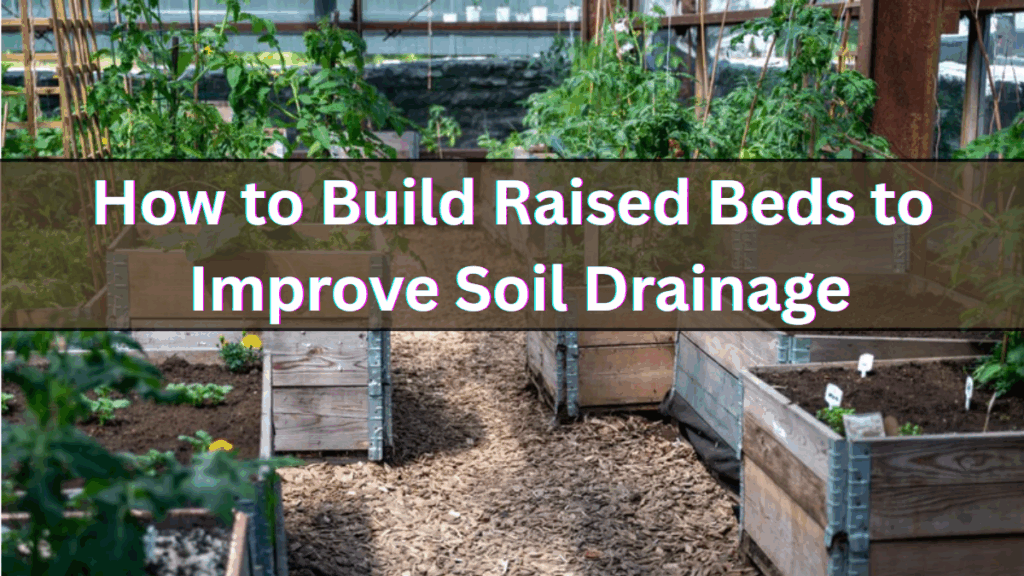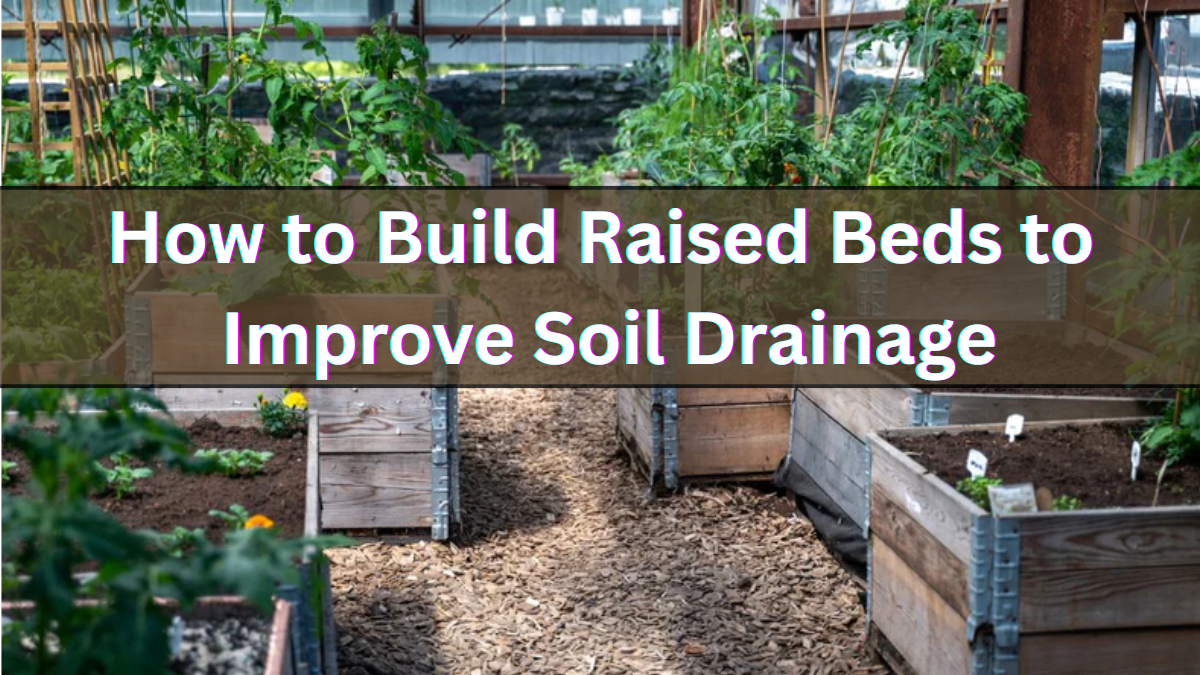If your garden struggles with soggy soil or poor drainage, raised beds can be the perfect solution. They not only keep roots healthy but also make gardening more organized and manageable. Let’s walk through a practical, step-by-step guide to build raised beds for drainage with the right soil mix, lumber, drainage layer, and weed barrier.

Why Choose Raised Beds for Better Drainage
-
Prevents waterlogging in heavy soils
-
Protects plant roots from rotting
-
Improves soil aeration and nutrient absorption
-
Allows customization of raised bed plans for different crops
-
Reduces weeds when combined with a proper weed barrier
Materials You’ll Need
Here’s a quick checklist before you begin:
| Material | Purpose |
|---|---|
| Lumber (cedar/pine) | Frame structure of the raised bed |
| Soil mix | Healthy base for planting |
| Drainage layer | Gravel, stones, or coarse sand to drain water |
| Weed barrier | Prevents weeds from invading the bed |
| Screws/nails | Securing lumber pieces |
| Drill or hammer | Assembly tool |
Step-by-Step Guide to Build Raised Beds for Drainage
Step 1: Plan and Measure
-
Sketch out your raised bed plans based on available space.
-
Standard size: 4 ft wide, 6–8 ft long, and 12–18 inches deep.
-
Make sure it’s not too wide—so you can reach the center without stepping in.
Step 2: Prepare the Location
-
Choose a sunny spot.
-
Clear weeds and debris.
-
Place a weed barrier at the bottom for long-term maintenance.
Step 3: Build the Frame
-
Use untreated lumber (cedar lasts longer outdoors).
-
Cut the boards to your planned size.
-
Assemble with screws/nails, ensuring strong corners.
Step 4: Add the Drainage Layer
-
Place gravel or small stones at the bottom.
-
This creates a drainage layer, preventing waterlogging.
Step 5: Fill with Soil Mix
-
Add a high-quality soil mix (compost + garden soil + sand).
-
Fill to about 1–2 inches below the top edge.
-
Level it out before planting.
Step 6: Start Planting
-
Select crops that thrive in well-drained soil (tomatoes, peppers, herbs).
-
Water lightly at first to let the soil settle.
Tips for Long-Lasting Raised Beds
-
Replenish soil mix every season with compost.
-
Inspect lumber for damage and replace if necessary.
-
Avoid stepping inside the bed to keep soil loose.
-
Rotate crops each year to maintain soil health.
FAQs
What type of lumber is best for raised beds?
Cedar or redwood is highly recommended because it naturally resists rot. Pine is a cheaper option but may not last as long outdoors.
How deep should a raised bed be for good drainage?
Ideally, 12–18 inches deep. This allows room for a proper drainage layer and enough soil mix for healthy root growth.
Do I really need a weed barrier?
Yes. A weed barrier reduces maintenance and prevents invasive plants from creeping into your raised bed. It’s especially useful if you’re building over grass or untreated soil.
Can I reuse the same soil mix every year?
Yes, but it’s best to refresh it with compost or organic matter each season. This restores nutrients and improves structure for better drainage.
Click here to learn more
